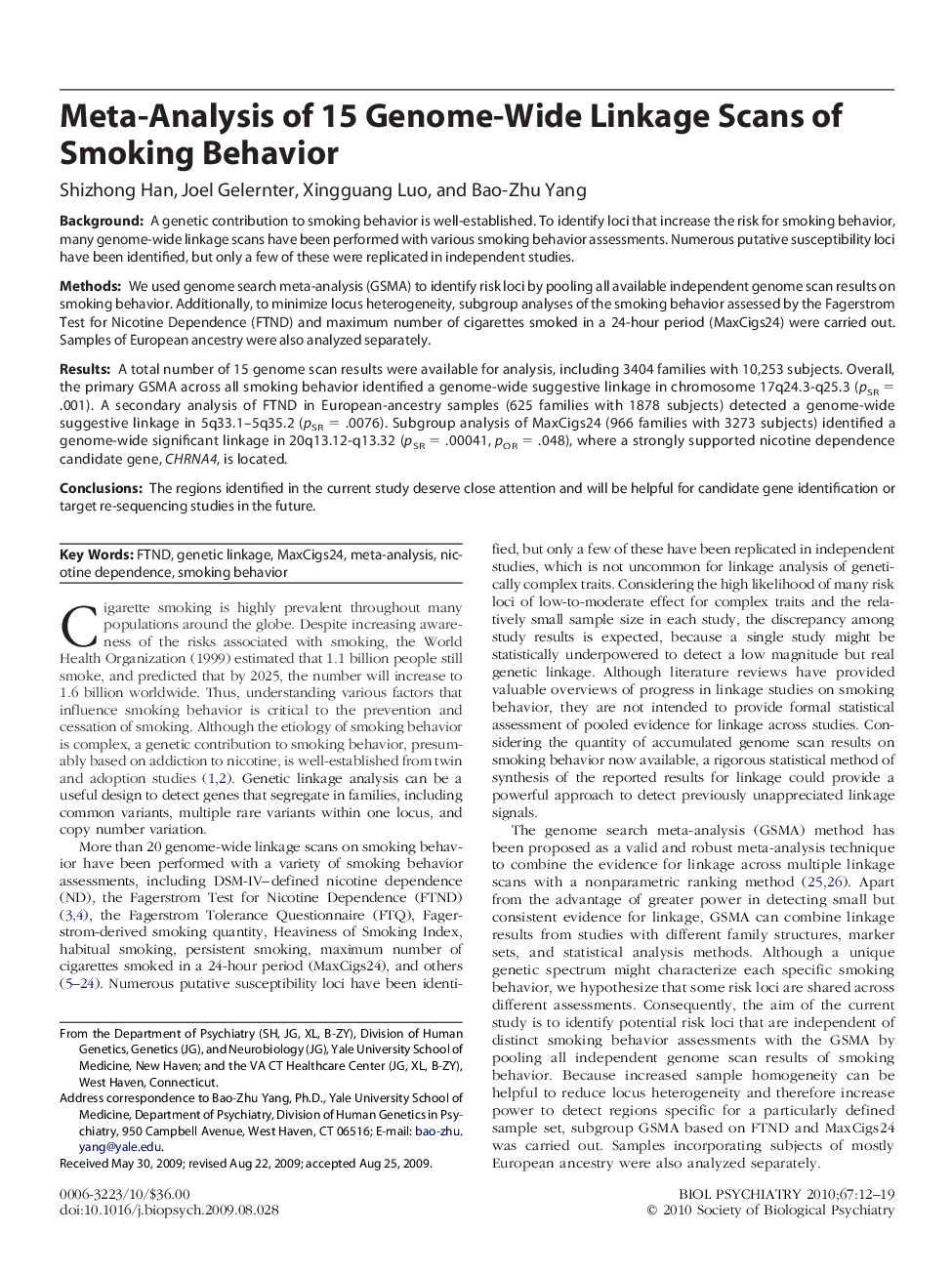| Article ID | Journal | Published Year | Pages | File Type |
|---|---|---|---|---|
| 4180251 | Biological Psychiatry | 2010 | 8 Pages |
BackgroundA genetic contribution to smoking behavior is well-established. To identify loci that increase the risk for smoking behavior, many genome-wide linkage scans have been performed with various smoking behavior assessments. Numerous putative susceptibility loci have been identified, but only a few of these were replicated in independent studies.MethodsWe used genome search meta-analysis (GSMA) to identify risk loci by pooling all available independent genome scan results on smoking behavior. Additionally, to minimize locus heterogeneity, subgroup analyses of the smoking behavior assessed by the Fagerstrom Test for Nicotine Dependence (FTND) and maximum number of cigarettes smoked in a 24-hour period (MaxCigs24) were carried out. Samples of European ancestry were also analyzed separately.ResultsA total number of 15 genome scan results were available for analysis, including 3404 families with 10,253 subjects. Overall, the primary GSMA across all smoking behavior identified a genome-wide suggestive linkage in chromosome 17q24.3-q25.3 (pSR = .001). A secondary analysis of FTND in European-ancestry samples (625 families with 1878 subjects) detected a genome-wide suggestive linkage in 5q33.1–5q35.2 (pSR = .0076). Subgroup analysis of MaxCigs24 (966 families with 3273 subjects) identified a genome-wide significant linkage in 20q13.12-q13.32 (pSR = .00041, pOR = .048), where a strongly supported nicotine dependence candidate gene, CHRNA4, is located.ConclusionsThe regions identified in the current study deserve close attention and will be helpful for candidate gene identification or target re-sequencing studies in the future.
